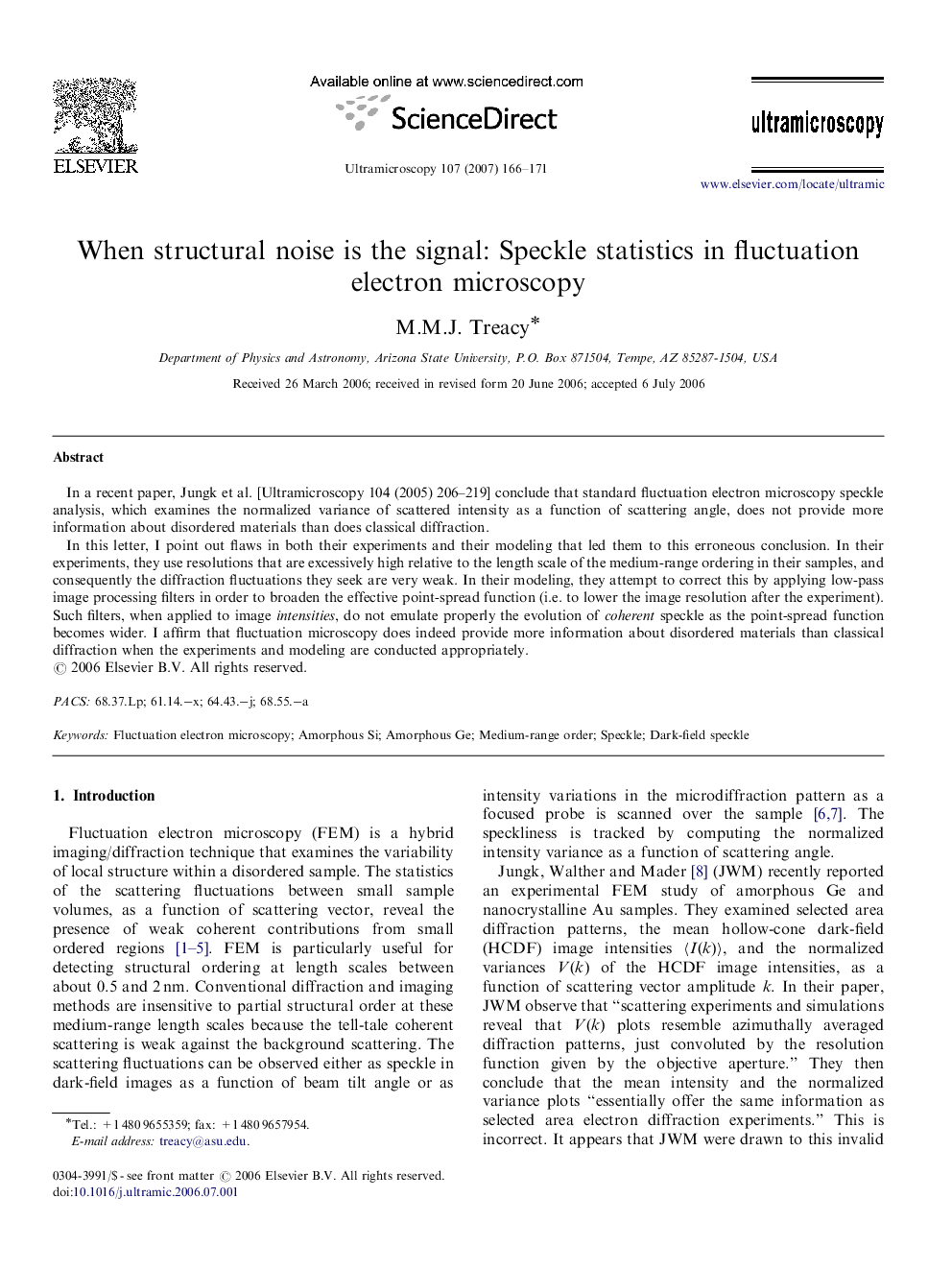| کد مقاله | کد نشریه | سال انتشار | مقاله انگلیسی | نسخه تمام متن |
|---|---|---|---|---|
| 1678696 | 1518371 | 2007 | 6 صفحه PDF | دانلود رایگان |

In a recent paper, Jungk et al. [Ultramicroscopy 104 (2005) 206–219] conclude that standard fluctuation electron microscopy speckle analysis, which examines the normalized variance of scattered intensity as a function of scattering angle, does not provide more information about disordered materials than does classical diffraction.In this letter, I point out flaws in both their experiments and their modeling that led them to this erroneous conclusion. In their experiments, they use resolutions that are excessively high relative to the length scale of the medium-range ordering in their samples, and consequently the diffraction fluctuations they seek are very weak. In their modeling, they attempt to correct this by applying low-pass image processing filters in order to broaden the effective point-spread function (i.e. to lower the image resolution after the experiment). Such filters, when applied to image intensities, do not emulate properly the evolution of coherent speckle as the point-spread function becomes wider. I affirm that fluctuation microscopy does indeed provide more information about disordered materials than classical diffraction when the experiments and modeling are conducted appropriately.
Journal: Ultramicroscopy - Volume 107, Issues 2–3, February–March 2007, Pages 166–171